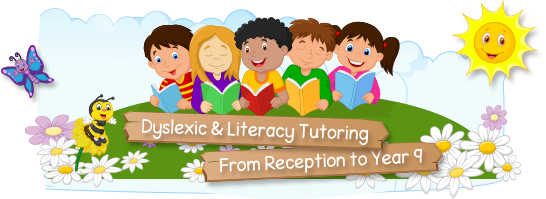Dyslexia Individual Education and Learning Plans
Learning plans are written by schools for students to
- outline their difficulties and strengths
- provide recommendations from professional reports to support them in the classroom and school
- set goals for the students during the term.
This information aims to assist parents and educators on a basic framework for developing a student’s individual education or learning plans. It also works to support students, parents and teachers to work towards a common goal and help create successful outcomes for students with dyslexia.
Individual schools, education systems and states may however have their own formats for their education plans. Please check with your teacher, Inclusive Education or Adaptive Coordinator or school regarding the process they undertake.
The important thing to remember for any parents and teachers is to keep communication open and clear, so the student is able to have the best possible learning experience and success managing their dyslexia.
Suggested items for a plan
- Information about student
- Strengths/interests/motivations
- Current needs/concerns
- Recommendations from assessment reports
- SMART Goals: Specific, Measurable, Achievable, Realistic, Time Related. Two goals for each area would be sufficient
- Review date: Suggest at the end of each term
Parent recommendations
- Your aim is to work in partnership with your teacher and school.
- Keep the lines of communication open with the teacher about your child.
- At the beginning of the new school year, (approximately two weeks) arrange a meeting with your child’s teacher. If your child is at secondary school arrange a meeting with the Special Education Coordinator before school starts.
- Involve your child in this process. Find out from them what works and what doesn’t work.
- Check to see if the teacher has a copy of your child’s assessment and provide a copy of it to them if they don’t. Check if they also have a copy of any previous plans.
- Highlight in the assessment the important parts, such as the needs of your child and the recommendations. These can be strategies or information recommended to support your child in the classroom and their learning. For example, reduce the amount of copying from the board, explicit teaching of phonics, spelling rules and conventions, additional time to complete assignments etc.
- Ask when an Individual Learning Plan will be organised for your child. Suggest two weeks after the first meeting.
- Aim to be involved in the meeting, contribute and review the plan framework. Ask for a copy of the plan and go through it.
- Find out when the plan will be reviewed next. Aim for a review at the end of each term, where goals can be evaluated and adjusted accordingly or new goals can be set.
- If homework is causing stress at home communicate with your teacher. Enquire if homework can be reduced or extensions can be given or assignments can be presented in other ways, such as Powerpoint or models etc.
- It is important to thank your teacher for the support they are giving your child. Give them feedback when things have worked well for your child.
Secondary school Students
For secondary students, plans consist primarily of accommodations and teaching strategies that teachers can use to assist the student in their subjects. Goal setting is not part of the process for older students. However, continue to communicate with individual teachers if your child is having difficulties or requires more support.
Goals for your Child
According to Learning Able Kids, it’s important to make sure your child is making progress in the areas they have difficulty in. Such as:
- Reading
- Spelling
- Writing
- Oral language
- Maths
- Other areas of the curriculum
- Organisation
These areas may then be broken down further into specific categories such as reading comprehension or number in maths.
Follow these 3 steps to write great goals in the plan:
- Choose the area your child needs to show improvement in eg. in reading it could be decoding and sight words.
- Choose a means to measure the progress (it needs to be data driven). Achievements in reading can be measured by using standardised tests or through other informal assessments. For example ‘a child will improve in reading’ is not a data driven goal. However a goal could be ‘the child can recognise and read 20 sight words from a specified sight word list by the end of term 1’.
- You want it to be a positive accomplishment for your child. Ensure you state what your child will achieve from the area you’re aiming to improve.
For more information on goals visit Learning Able Kids.
Links to Resources
- Understood
- DECD Learning Plans – South Australia
- DECD and Dyslexia – South Australia
- Special Education Resource Centre
Suggested DECD Individual Learning Plan
DECD (South Australia) Individual Learning Plan format that could be used from SERU (Special Education Resource Unit)

